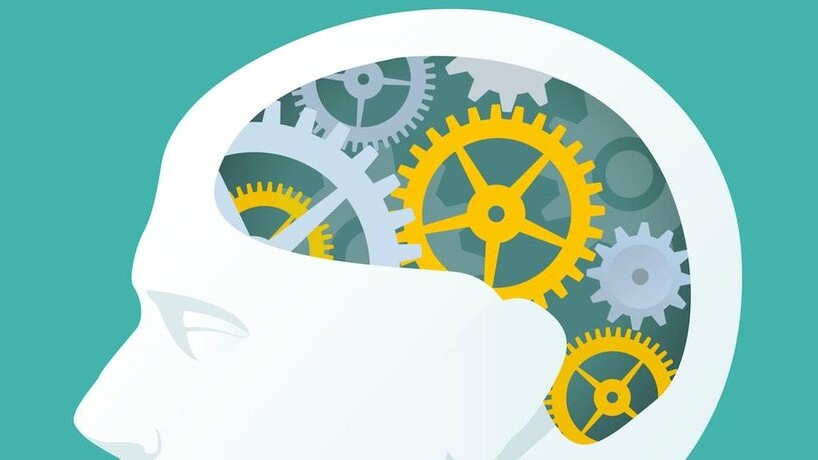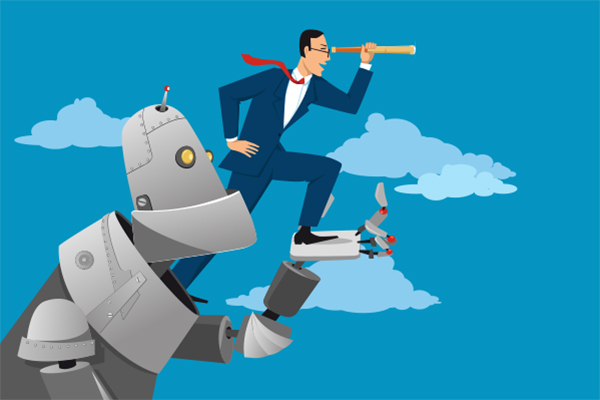
Students of marketing are worried. They fear that they will already have been replaced by the time they graduate and look for career positions. And some of this fear is warranted, of course. AI has become the new “darling” of marketing, as an ever-increasing number of uses keep being discovered.
But, the picture is not as bleak as marketing students may be painting. What marketers need to understand is that AI can relieve them of all of the mundane manual tasks, provide them with amazing insights, and allow them to spend time on the creative aspects of their jobs.
Exactly What is AI Doing Right Now?
AI is not new to marketing. It actually began with automation of lots of marketing tasks that were initially done manually. Marketers would create their campaigns – on social media, via emails, through paid advertising, etc. and then manually schedule and publish/send their content. AI has now replaced all of this manual activity through automation software that will schedule and publish this content. It will also personalize that content based upon segmentation of target audiences. Here is how that works:
- Marketers know they have targets who are at all stages of the sales funnel. Based upon the behaviors of those targets, AI software will segment those targets into categories.
- Marketers can then create content for each of those segments and automation sees to it that the right segment gets the right marketing campaign materials.
- Automation software can personalize not just by segment, but can address targets by name, can determine geo-location and can then push marketing content based upon that. Thus, a target who is within 1000 feet of a Starbucks, who is known to be a Starbucks customer, can receive a text with a coupon for a mocha double latte, because that is what he usually buys. AI has stored all of that data about that customer and is trained to use it efficiently.
- Some companies are also experimenting with AI as a creator of marketing materials (more on that later)
The benefits to business are obvious – AI has assumed a monumental amount of work that was inefficiently done by marketers who just didn’t have the time or the wherewithal to segment and personalize.
How Does AI Do This?
It’s all about big data and account-based marketing (ABM).
- AI gathers data across multiple platforms, and can then “crunch,” or analyze that data very quickly
- It will develop “personas” based upon target audience individual behaviors. These are far more accurate than human-generated personas, because they are based upon data not limited human research (no one has the time to do what AI can do).
- It then makes recommendations to marketers relative to products and services that should be offered, on an individual or segmented basis. Marketers can use this information to create the right content for the right people.
- AI can even “discover” and identify new targets based upon their online behaviors and purchasing histories. It is far better at lead generation than the manual method.
- AI has the ability to learn based upon the data it collects and the connects it then makes, much like mice learning how to navigate a maze. And there is a body of Facebook research that explains some amazing potential for using AI to assist humans, especially those that are handicapped.
Benefits for the Content Marketer/the Business
- Content marketers create engaging and compelling content. To date, the results of AI-generated content are not especially engaging and exciting. It takes the human creative brain to come up with content that people will read, view and share. However, AI can be used for a couple of important tasks – generating keywords and topics. Already, writing services are experimenting with new uses of AI – Essay Supply, for example, is experimenting with software that will analyze the emotional appeal of copywriting content it creates.
- Using actual data, AI can make recommendations for the right touch points and the best messaging for individual targets. These recommendations are based on actual target behaviors and preferences, not guesses.
- It’s a marketer’s dream. AI software can shoot a personalized email or text out to a target as soon as a specific search or “look” has occurred. And it can send that across channels and devices based upon individual customer’s actual use of them.
- It’s easy. New AI marketing software allows a marketer to “set it and forget it.” The machine goes to work, keeps learning, and targets audiences with the right content. Marketers can focus on their creativity and their strategies, telling the AI software what to do next.
- For multi-national marketing, AI recognizes and translates languages.
- AI personal assistants such as Siri and Cortana apply speech recognition to requests and commands from users. They can take commands, such as “Find me a vacation spot in Florida that has activities for kids.” And, over time, they keep learning, so that their speech recognition becomes even more sophisticated – they keep adding vocabulary to their repertoires.
With all of this ability, marketers do wonder where AI will go next, and will it totally eliminate their jobs.
The Future for Marketers
Here is what sparks fear in the minds and hearts of marketers. AP alone publishes about 3,000 articles each quarter, using AI algorithms, not people. Ad agencies all over the world are experimenting with the use of AI to create more engaging content.
But AI is really a science, not an art. And at this point, it is hard to see how some of the “art” of content marketing and other advertising can be “learned” by machines, especially learning the unscientific and unpredictable nature of human emotions and subtleties.
What AI can do are all of the mindless and the statistical analyses tasks that we either don’t want or don’t have the skill to do. And it can replace countless hours of imperfect data collection and analysis that no one has the time to do anyway. And it bolsters marketing so that it meets the demands of today’s consumer.

The Problem With NOT Using AI
Think about it. With the attention span of a goldfish and the insistence upon immediate results, today’s consumer is fickle. Marketers have only a few seconds to grab their attention. If any content or ad does not address exactly what they want, the move on without a second thought.
Here is where the blend of AI and humans comes into play. Marketers have to stop flooding people with irritating and irrelevant content- one of the reasons for the popularity of ad-blocking apps.
When marketers can embrace all of the AI technology possible, they can get the data and recommendations that allow them to use their “art” to develop relationships with consumers, to entertain, to inspire, and to inform them.
The Example of Netflix
Netflix used AI to gather data about its audience. What it discovered was that their viewers were consistently watching movies directed by David Fincher. The data also told them that the British version of the series “House of Cards” was extremely popular as was films in which Kevin Spacey starred. This information led them to make the decision to purchase the American version of “House of Cards” for $100 million.
Then they marketed the series with different trailers, each of them geared to a segment of the audience that AI data had provided. The gamble was worth it.
And Netflix knows much more about its audiences based upon the behavioral data that AI provides. And it customizes its marketing based upon that data.
It’s a Marriage!
So, this is how marketing can utilize the ever-expanding data that AI can provide. Already companies have several versions of their websites, and visitors are shown the version that best relates to their interests, their demographics, and their purchasing histories.
Data drives the decisions. But it is the marketer who ultimately makes those decisions, creates the content, and puts the “levers” in place to automate what AI then does. In the future, consumers will be fed only what AI shows will be of interest to them – whether that is the news they get, the TV shows that come on, the social media content they find in their feeds (this is already the case, especially on Facebook), and the push marketing and notifications they receive on their devices.
A marketer cannot do this alone; neither can AI, at least for now. It’s the collaboration of the two that makes marketing “rock.” Indeed, AI becomes the power behind the marketer, so that the marketer can then drive. vehicle.
Get the TNW newsletter
Get the most important tech news in your inbox each week.




